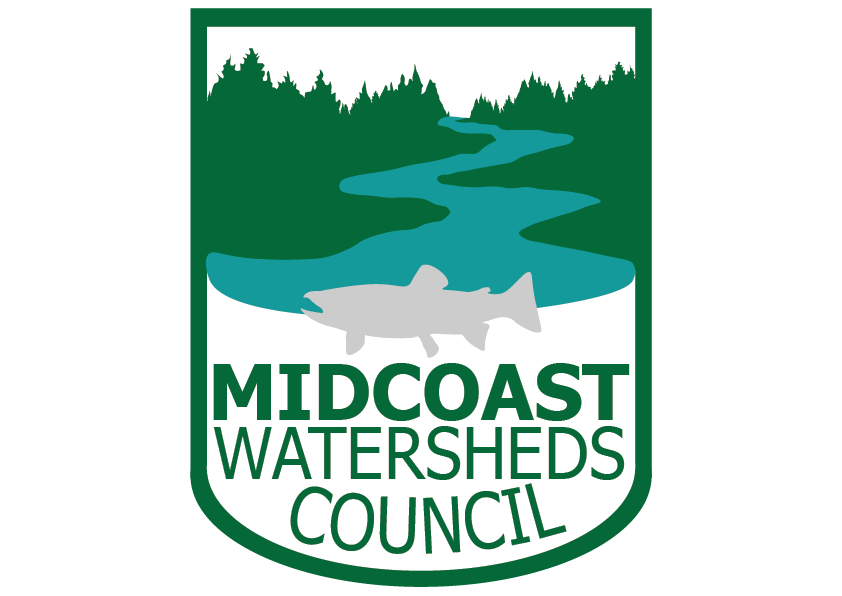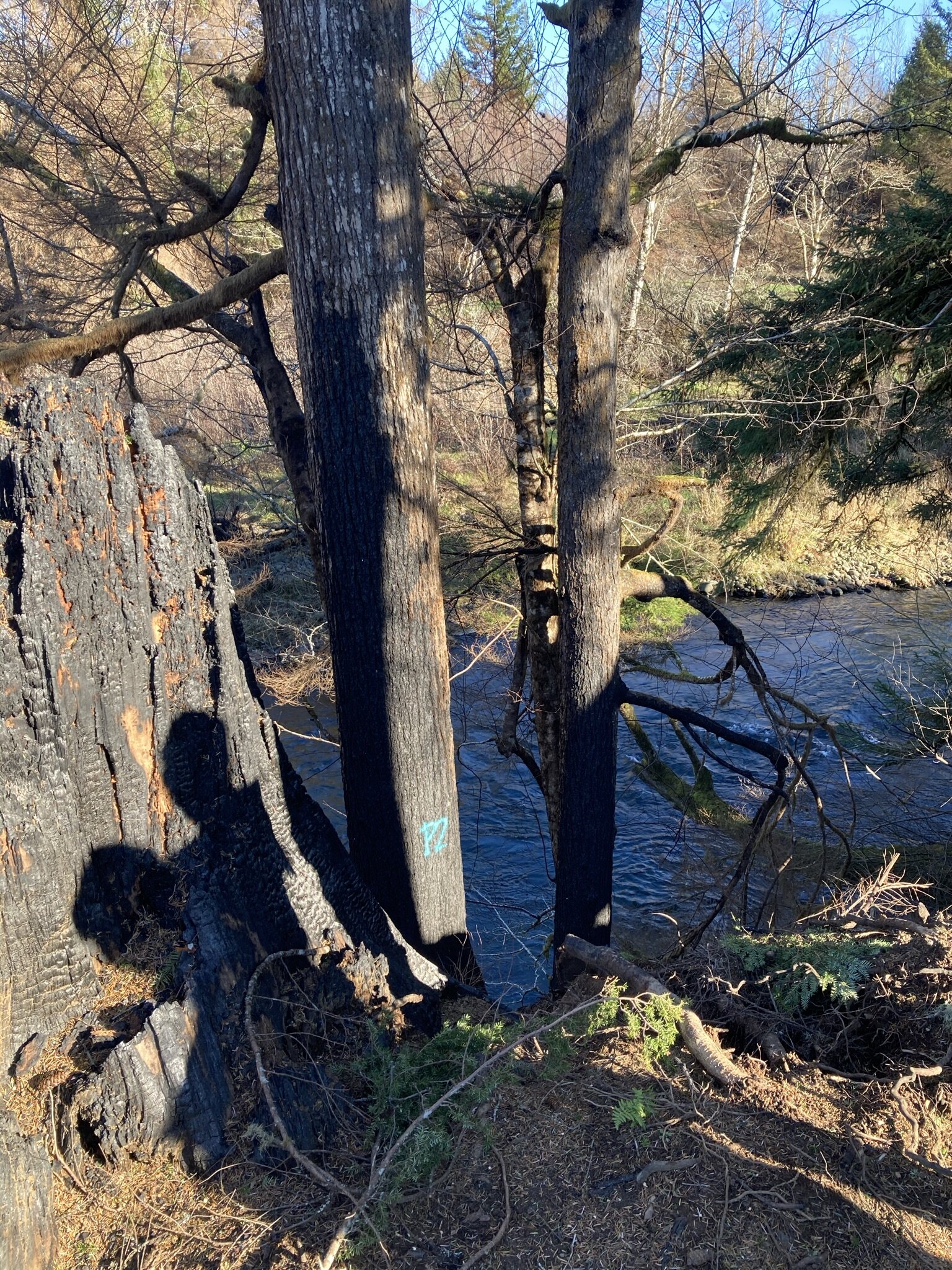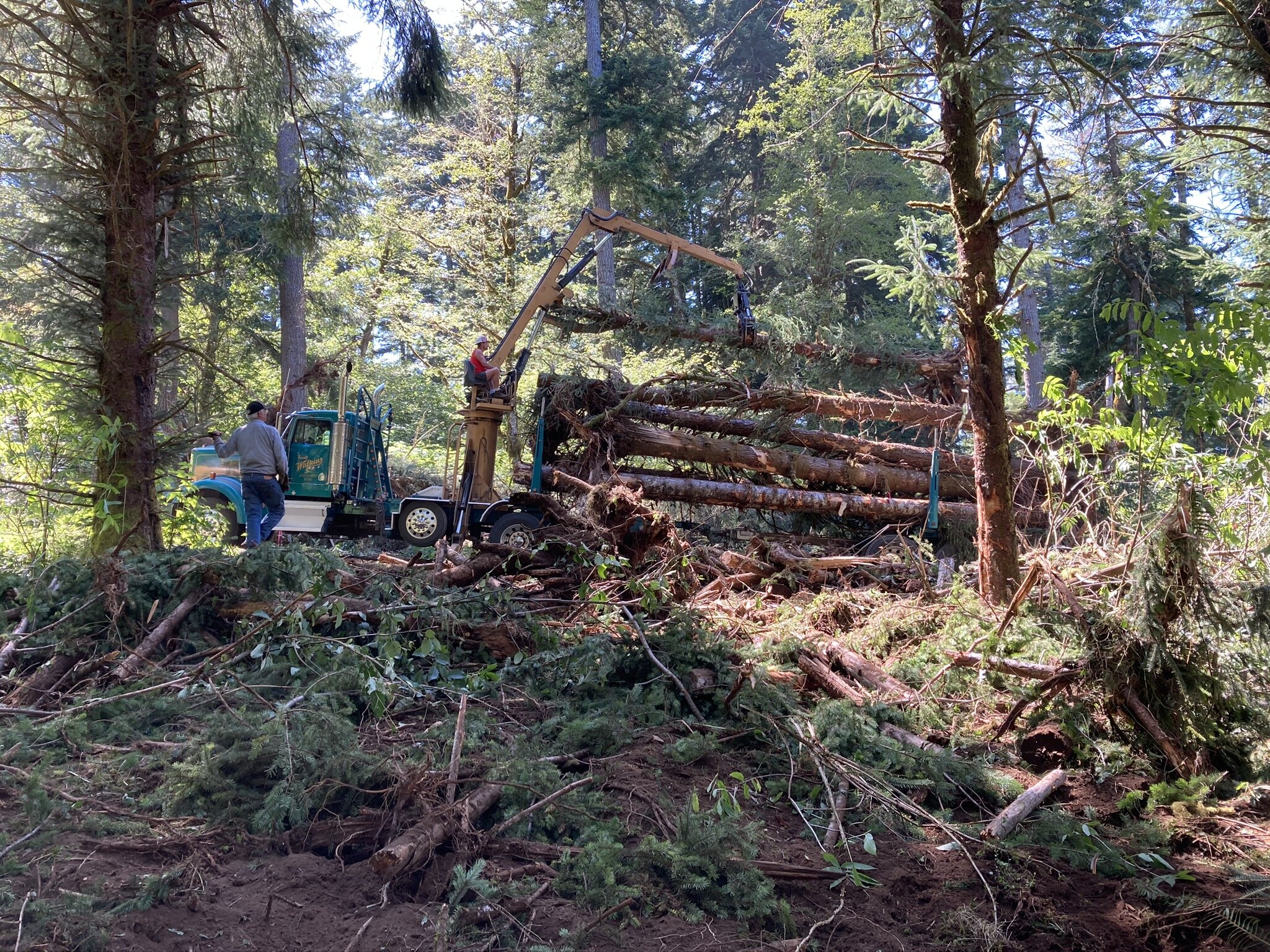Amid the devastation brought by the September fires near Otis, a bit of good news—for our local salmon.
Fire damaged trees marked for removal, like these along the Salmon River near Otis, will be given a new life in salmon habitat restoration projects throughout the region. (Photo: MidCoast Watersheds Council)
As the clean-up continues, you may have noticed work crews contracted by PacificCorp, clearing and stacking damaged trees, unable to be milled, by the roadsides. Though mostly unmarketable, the trees are finding valuable use for salmon habitat in our streams and bays.
Biologists from the MidCoast Watersheds Council, Salmon Drift Creek Watersheds Council and the Confederated Tribes of the Siletz Indians are transporting the logs to sites near where they will be used this coming summer for habitat restoration projects.
Evan Hayduk, coordinator of the MidCoast Watersheds Council, worked with the contractors and the U.S. Forest Service to find a site near the Salmon River for storage. “Sixty years ago, people thought they were doing good by clearing wood out of streams, and we’re still struggling to this day to find enough large logs to repair the damage that caused to salmon habitat”, Hayduk said. “Logs help slow water flow. This settles out gravel and creates back water eddies and side channels that young salmon can use to avoid getting washed downstream prematurely, before they can grow large enough survive, and thrive.”
New USFS Hebo District Ranger, Bill Conroy, a hydrologist by training, is keenly aware of the importance of these logs and worked quickly to find a place on forest service land for their temporary storage near planned restoration work sites. “We are always pleased to partner with our local watershed groups, and we understood, that this opportunity would be lost if we couldn’t find a place for the logs”, Conroy said. We often do log placements on our own properties, and the wood profoundly changes and improves the stream for salmon, lamprey, amphibians and other animals”. But it also helps the physical nature of the stream as well, he explained. “By collecting sediment, the wood also helps the stream from downcutting, allowing it to be connected to surrounding wetlands and floodplains, helping downstream areas avoid flooding. This was a really tough year and so many people in our communities were impacted by fires. I’m glad we’re able to be part of one positive outcome from this challenging year.”
For now, with the fire’s bounty, there will be enough trees for near-term projects, however the watershed councils are continually seeking more. Logs used for restoration need to be the right size so they stay in place. Oregon Department of Fish and Wildlife’s standard for habitat restoration logs without a rootwad is that they be two times the width of the stream as measured from bank to bank at a standard flow level. Coordinator Hayduk, noted that this means “for a stream that is 25 feet across we’d need a log 50 feet long!” He explained that they’re always looking for donations—especially of spruce, fir, and cedar since they last the longest in the creeks. “We can help landowners by hauling trees away for free that fall or are cut down, but often when landowners contact us (call 541-265-9195) they’ve already cut the log up into shorter pieces which we can’t use unless they have a root ball on them”.
In addition to the logs resulting from the fire, many smaller trees and branches are being chipped up. Mountain F. Enterprises, Inc., and their subcontracting partners who are working to assist PacifiCorp in this fire impact mitigation effort, use specialized equipment to place the chips over the bare ground left by the fire, particularly by the stream banks, where they are held in place by coils of erosion matting to prevent sediment, including sediment with toxic chemicals remaining after the clean-up from the fire, from being washed into the creeks and streams—another benefit for the fish. “We’ve seen and heard from residents about the hardships the fire has caused. Many lost everything and it will take years to rebuild if they can”, says Sean Latzen, Contract Project Manager for Mountain F. Enterprises, “so it’s a welcome change of pace to see the good coming out of it for the local groups and salmon.”
Contractors will utilize self-loading log trucks and other equipment to move logs damaged by the fire to storage areas or directly to salmon habitat restoration project sites to improve fish and wildlife habitat. (Photo: MidCoast Watersheds Council)



